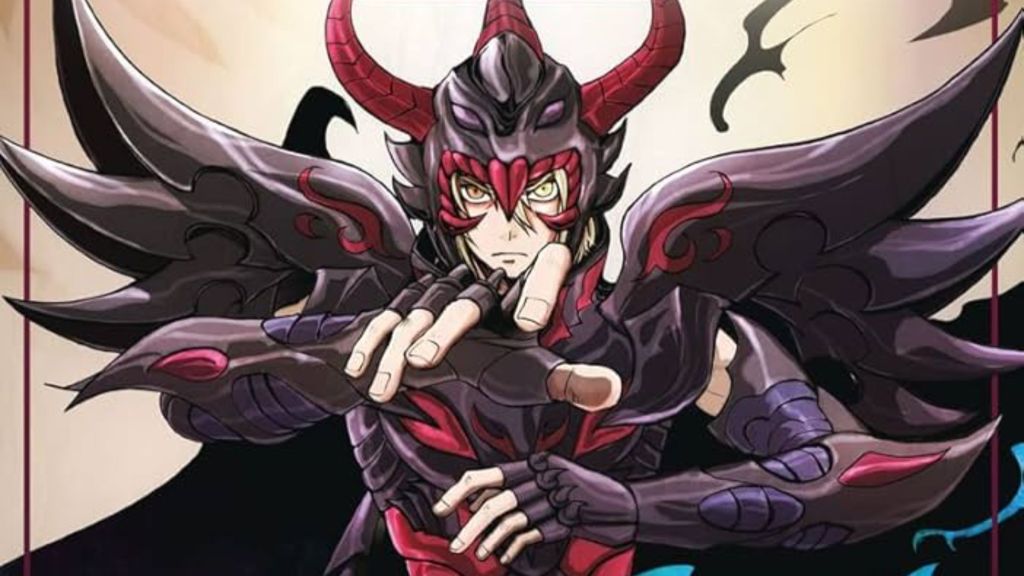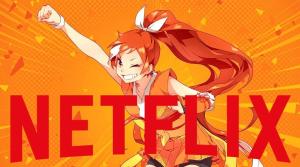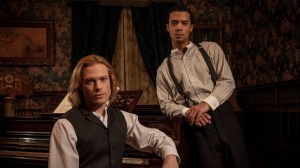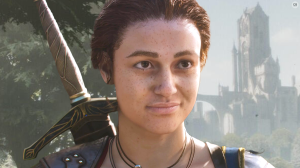Fan reception towards the Saint Seiya spin-offs has always been tepid. Some titles, like Lost Canvas, remain fan favorites, whereas others, like Saintia Sho, are decidedly more mixed. Saint Seiya: Dark Wing presents one of the most intriguing premises in the franchise. Dark Wing features a more contemporary setting, starring modern-day teenagers in high school. The manga also puts more emphasis on Hades’ Army, which were the primary antagonist of the later arcs of the classic series. It’s a unique hook for a spin-off title, and the first volume teases enough mystery to make you want to read more.
Videos by ComicBook.com
The biggest problem with the first volume is the bland characters and heavy reliance on the franchise’s cliches. The characters, especially the lead protagonists, are unrealistically nice and lack much dimension. The first volume also completely switches protagonists midway through, leaving readers hanging on a major revelation. Nonetheless, author Kenji Saito knits together an intriguing narrative that forces readers to question both sides. There’s a complexity to the conflict that adds depth to the story, giving fans enough to chew over as they wait for the next volume.
Rating: 4 out of 5
| Pros | Cons |
| Genuinely interesting mystery | Bland Characters |
| Fun Twists | Switches Protagonists |
| A complicated conflict where both sides could be either good or evil |
Saint Seiya: Dark Wing Is Off to a Promising Start

Saint Seiya: Dark Wing stars high school student Shoichiro Tokito, who attends Graad International University High School for talented individuals. Shoichiro attends the academy with his twin brother, Sojiro, his childhood friend, Cattleya, and his crush, Yoruhime Tsukishima. During a school trip on a boat, the students were suddenly struck by a beam of light. Shoichiro seemingly perished saving Yoruhime, falling into the water, only to re-awaken in Elysium as the new Spectre Wyvern for Hades, one of the three Judges of the Underworld. From there, he is instructed by Hades, who takes the form of a young boy, to return to Earth to slay Athena, who is supposedly the one responsible for the attacks on Earth, including the one on the boat.
People keenly aware of Saint Seiya lore would instantly be skeptical of Hades’ claims about Athena. Hades was the final antagonist of the original manga, making his claims of Athena’s malicious actions seem doubtful. Moreover, the first volume later reveals that Athena has been reincarnated as Cattleya, who had yet to remember who she was before the attack on the boat. At the same time, there are some dubious actions among the Gold Saints, with Crapicorn coming off as the most antagonistic. While this seems to be plenty of information to throw at readers in the first volume, the manga doesn’t feel over-stuffed and is paced well. Every major development is given a moment to breathe and let readers take it in.
Shoichiro serves as our viewpoint character of the series, having no reason to question Hades’ claims. Artist Shinshu Ueda gives every character memorable facial expressions, even though it doesn’t perfectly match the style displayed in Masami Kurumada’s original Saint Seiya manga. Despite the character’s over-the-top and enduring emotional reactions, the biggest problem with this first volume is how deeply bland the main protagonists are. Shoichiro and his brother Sojiro are so nice that it borders on saintly (ironically). The brothers’ kind-hearted nature is meant to make them appear likable, yet it makes them too inhuman and inauthentic. Real brothers would argue and make jokes about each other, but Shoichiro and Sojiro only have deep respect for each other, which doesn’t make them compelling characters.
However, the fact that both brothers are on opposite sides of the Athena and Hades conflict hints that a potential rift between the two is on the horizon. It turns out that Sojiro is the Gemini Gold Saint and has been protecting Cattleya. It’s this potential schism that adds the most personal drama in the series. Sojiro even takes over the protagonist role in the latter half of the volume. This switch in protagonists is jarring, especially since we’re still getting to know who Shoichiro is at this point. Fortunately, Sojiro’s side of the story delivers some of the story’s most interesting lore-building moments, including potential corruption within the Gold Saints and hints of the Saint Seiya multiverse. Saito understands how much information to hint at to make readers engaged, effectively sewing a story with plenty of intrigue. Although Saito’s writing style may be criticized for being too overdramatic, the first volume does feature plenty of good twists. The revelations of Cattleya being Athena and the surprise appearance of Aiolos were genuinely shocking moments in the manga.
There’s still plenty to nitpick about Saint Seiya: Dark Wing. The spin-off title continues the franchise’s over-reliance on the Gold Saints, and the attacks used by the characters remained the same across the entire brand. Nonetheless, Saito and Ueda created a manga with a solid mystery with potential repercussions in the greater Saint Seiya multiverse. The first volume of Dark Wing is fun, engaging, and well worth checking out if you’re a fan of the franchise.
What do you think? Leave a comment below and join the conversation now in the ComicBook Forum!









